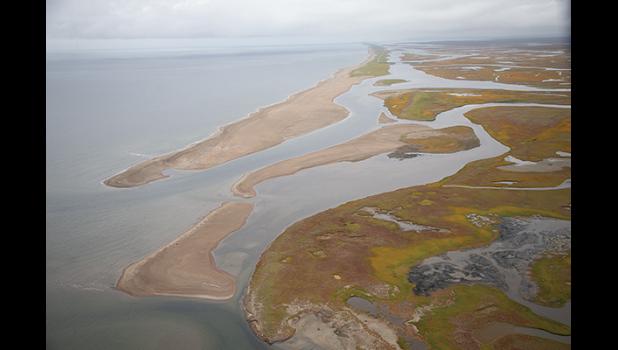Army Corps extends comment period for IPOP project
On Monday, the Army Corps of Engineers Project Manager for the proposed IPOP gold mine project announced that the public comment period on the project has been extended to September 15. Project Manager Leslie Tose said in an email to the Nome Nugget that the comment period was extended to allow the agencies additional time to review bathymetric mapping and seagrass study information that was provided by the applicant in late August.
Also, the applicant has not yet delivered the materials of the Narrative and Operational Plan to interested parties who requested a hard copy. According to Tose, the project’s agent, Bill Burnett, stated that the materials were mailed out late last week.
The comment period comes at an unfortunate time as most regional residents are busy moose hunting or fishing to fill their freezers for the winter to come.
The Corps also sees a change in project manager for the IPOP project. When asked why the project manager was changed in a crucial phase of the project’s permitting process, Tose said that the Corps adjusts staff assignments to respond to changing workload needs. “Management made a decision that they wanted me to do other things,” she wrote. The new project manager is Tiffany Kwakwa. Tose said that the change in project manager shouldn’t make a difference because each step of the Corps permit process is consistent.
Tose said that when the public prepares comments it should be noted that signing a petition, such as one out on change.org is not enough to influence the Corps’ decision and even sheer numbers of signatures gathered won’t make a difference. Effective comments, she said, discuss the effect of the project, in Bonanza Channel or elsewhere in IPOP’s 32 claims, on a specific resource. “For example, if a person wanted to comment on subsistence or natural resources, an effective comment might talk about the effects of the project in terms of type of habitat altered, animal displaced, or increase in noise or disturbance, and how it might affect animals,” she wrote. As proposed, the project would affect a variety of estuarine habitats: shallow water at various depths, wetlands, mudflats and vegetated shallows.
The applicant proposes digging an access channel approximately 85 feet wide, 10 feet deep and 3,500 linear feet long. How would this affect specific subsistence activities, such as egging, hunting waterfowl, or seals, and fishing in this area? The applicant proposes to dredge a 110-acre mine channel, 6,200 feet long by 400 feet wide and 31 feet deep, over a period of five years. They propose placing excess dredged material into approximately 64 acres of area adjacent to the access channel and mining channel and using the rest to fill in the hole as they go along. They propose that no more than 15 acres at a time would be involved in active mining and to use a silt curtain around the active mine area to contain turbidity.
The Corps wants to hear from the public if IPOP’s reclamation proposal is practicable and if it would achieve their goals of improving essential fish, and other habitat?
Another area of comment might relate to the exploration activities and the mine operation. The applicant is basing their mining plan off of 13 core samples conducted in 2019 with a 2.25-inch external diameter GeoProbe 540 MT. Do experienced miners find this sufficient? The applicant has included results from their sampling effort. The Corps would like to hear from miners if IPOP’s sampling and chain of custody methods are defensible and consistent with industry standards? “Are the results consistent with known geotechnical information from the area and conveyed in a professional and rigorous manner? Is the project that has been proposed a rationale outgrowth from the testing that has been done? Has the applicant taken into account how they would operate under non-fair weather conditions? What conditions you have worked in as a miner that give you insight that the Corps should be aware of? Tell us how the project would affect your subsistence activities. Let us know how many people you feed with your efforts?” wrote Tose. “These are some of the questions the Corps is interested in.”
Also, the public might possess other areas of knowledge and experience relating to the project that should be brought to the Corps attention during public comment. Public comment is important, she added.
After the comment period closes on Sept. 15, the comments are reviewed. According to Tose, the Corps then identifies areas of conflict or insufficient information and forwards substantive comments to the applicant for response. The Corps, the agencies and the applicant may enter into discussion in an effort to resolve outstanding issues. Additionally, there are processes such as tribal coordination, and consultation and coordination under the Endangered Species Act and Magnusson-Stevens Fisheries Act, and the DEC Section 401 certification, which must be completed. Corps produces a decision document, and comes to a determination that the permit may be issued without special conditions, issued with special conditions or denied.

